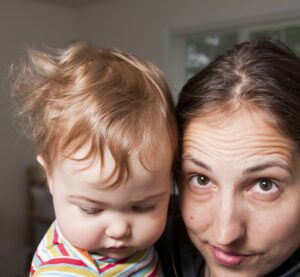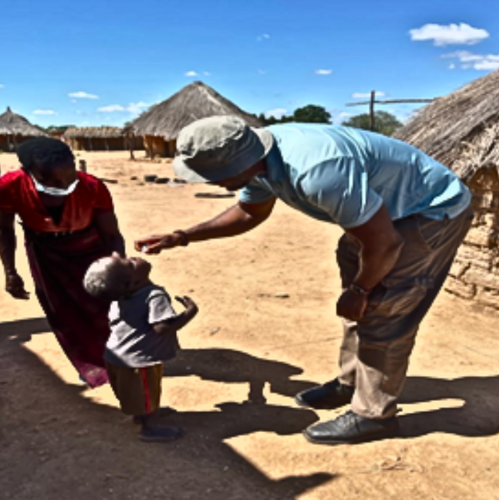 My son, H, had his 12 month well visit one Friday where he received the pneumonia, MMR (measles, mumps, and rubella), and Hepatitis A vaccinations.
My son, H, had his 12 month well visit one Friday where he received the pneumonia, MMR (measles, mumps, and rubella), and Hepatitis A vaccinations.
His fever started on Thursday. He woke up with it. He was less energetic than usual, less playful. Even the cone-sorting toy could not lure him to the floor for play. He had no interest in being anywhere other than in my arms. I called our pediatrician’s office that day to let them know he had a fever and that I suspected it may be a reaction to the MMR. I thought this because of the timing and because we hadn’t been around anyone who I knew to be sick recently.
I ended up calling again the next day to ask how long to expect it to last, as the fever didn’t seem to be going anywhere. The nurse that day said a fever that was a reaction to the MMR should last between 2-3 days. She said it was likely the MMR (although this was just a phone call and no one in the office had seen him) and told me to expect a rash to develop in the next day or so.
On Sunday, I saw the beginning of a rash on his back that spread pretty quickly to his front and made an appearance on the insides of his forearms. The rash was blotchy red spots, definitely larger than pinpricks, but, if I remember correctly, smaller than dimes. It was definitely all over his trunk when all was said and done.
We saw a doctor in our pediatrician’s office on Monday. He examined H and talked to me about timing between the 12 month visit and the onset of the fever, H’s symptoms, whether he went to daycare or not, and so on. He said that H was healthy (heart, lungs, ears, throat, eyes). He said that the rash was consistent with what he might expect from an MMR reaction, but that the fever was a bit higher than usual and that the diarrhea was unexpected. I didn’t think to mention the cough (it wasn’t a big cough and he wasn’t coughing very much, but he definitely had a small cough that he doesn’t have all the time), but the doctor asked about it and said yes, he did have a cough. I don’t remember the doctor saying anything about the cough specifically after that.
My recollection is that he said what was going on could be a reaction to the MMR, possibly coinciding with another viral illness. I had a feeling that he was trying to rule out an MMR reaction by seeing if it could be something else, but that the rash made him not rule out an MMR reaction entirely. This is just my impression, not something the doctor said directly. He did say that the rash should clear up in the next two days, and it did.
H seemed much better over the two days after the visit. His fever was down, the rash disappeared, there was no more diarrhea or coughing. He was clingy for at least another week, but who knows exactly why. He generally likes to be held and worn.
When H was born, I sat with him through some hard things, through soft eye shields and bilirubin lights, through IVs inserted through veins in his hand and in his head, through day after day of failed bottles that ended as g-tube feedings.
And yet these four days of fever felt as hard as anything we’ve been through, perhaps because of a feeling I could not shake. I did this to him, I thought. I made a choice, and now he is suffering.
And why? What are the chances that he would ever get measles if he remained unvaccinated? I cannot recall even reading about a case of mumps in the news. Who gets rubella these days? These diseases are so removed from my everyday existence that I could not have told you what they looked like exactly, what havoc they could wreak on one’s body.
Seeds of doubt started to creep in. Maybe the side effects of vaccinations aren’t worth it, I thought. I made a choice, and now my child is suffering.
And then this showed up in my newsfeed: Rubella confirmed at Valparaiso University in Indiana.
Rubella, sometimes called German measles, causes a low-grade fever and a mild rash on the face of infected children. The glands behind the ears swell, and sometimes the small joints do as well. Although children typically recover without lasting consequence, rubella is not so benign for an unborn child. Before the rubella vaccination was widely available, 85% of women infected with rubella during their first trimester gave birth to babies with birth defects, including blindness, deafness, heart defects, and mental retardation. These things stay with one for a lifetime.
I got more curious. I searched for images of children afflicted with measles. I looked at the swollen necks of those with mumps.
I couldn’t stop looking.
I saw a skin lesion on a child’s leg caused by diphtheria. It was a small crater surrounded by raw, tender flesh. An infant suffering from Hib had gangrene of the hand, secondary to the Hib infection. I saw the yellow eyes of Hepatitis A, the shriveled, deformed limbs of polio. I saw suffering.
There have been three confirmed cases of measles in Seattle this month, and Valparaiso University is not so far away from me by plane. Syria, where an outbreak of measles has infected at least 7,000 people and is still spreading, may be half a world away, but it is not hard to get from there to here. In Somalia, polio, which had nearly been eradicated, is suffering the worst outbreak in the world. Air travel puts us all, including our diseases, closer together than we might expect.
H did not have measles. He did not have mumps or rubella. I made a choice, and he may have had a reaction to the vaccine, but that reaction came without the risks of measles, mumps, and rubella: pneumonia, encephalitis, meningitis, deafness. He likely developed good immunity with this round of the MMR, and a booster at four years of age will ensure it.
The fever broke five days after it started. The cough and the rash are gone. H is back to his lively, happy self. He still wants to be in my arms a great deal of the time, but who am I to argue? It’s one of my favorite places for him to be.
He is protected. I made a choice, and now he is protected.
Tracy Banaszynski is a mother, wife, and artist. She had no idea before her baby was born that she would be a vocal supporter of vaccines. She lives in Seattle with her husband and young son.



